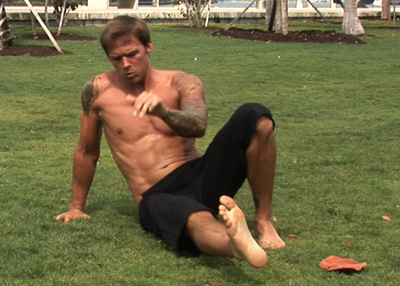Most people are familiar with the term ‘abs,’ which refers to the front middle portion of the body that houses the proverbial six-pack we see glorified in magazines and other popular media. The formal term for the ‘six-pack’ is the rectus abdominis, and while this muscle group is an important contributor to overall strength, there are many other muscles that surround the middle portion of the body and make up the front, sides, and back of the torso, or trunk. To attain optimal strength and integrity of the trunk it is thus necessary to move in ways that flex and extend the body multi-dimensionally: front-to-back, side-to-side and rotationally. It is also important to include non-moving, or isometric, exercises in your trunk routine to strengthen the ability of the trunk to limit movement and thus prevent joint hyperextension. Here’s a quick guide to the anatomy and physiology of the trunk, along with exercises that specifically target each trunk muscle for a comprehensive approach to building a strong, powerful physique.
Superficial trunk muscles
The superficial trunk muscles include the rectus abdominis, the external obliques, the internal obliques, and the spinalis group. This entire series of muscles essentially surrounds the lower half of your torso and is visible if not covered by a layer of body fat. These large abdominal muscles provide strength for movement and stability for preventing movement.
Rectus abdominis: Flexes the spine and compresses the abdomen
External obliques: Contract both sides to compress the abdomen
Internal obliques: Contract one side to bend the spine sideways. Both the external and internal obliques work together to rotate the upper body around the spine.
Spinalis group: Extends the spine. This muscle group runs the entire length of the vertebral column.
Deep trunk muscles: The deep trunk muscles include the transverse abdominis, quadratus lumborum and the psoas major. While these deep muscles may not be directly seen, they contribute to the overall shape of the body and integrity of the skeletal system.
Transverse abdominis: Compresses the contents of the abdomen and also stabilizes the spine to handle internal and external force.
Quadratus lumborum: Flexes the spine sideways.
Psoas Major: Although the psoas major is primarily a hip flexor, it also flexes the spine and thus is considered a trunk muscle.
To develop your trunk in such a way as to support optimal health, it is important to first start with proper posture and breathing form. These elements are the foundation for a strong trunk. Upon this foundation you may further build the type of physique that looks and feels strong and powerful.
Posture:
1. look straight ahead, eyes out to the world!
2. chin/head back
3. shoulders back and down (aka proud chest)
4. abdomen pulled in (navel to spine)
5. knees soft
6. palms out (activating rotator cuff muscles – optional)
In this position your muscles are "pre-loaded" for movement and you are best prepared to avoid injury, so make this position a part of who you are.
Breathing:
Breathe in your nose and out your mouth as much as possible, but especially when your heart rate and respiration increase with exertion (exhale on the exertion).
Trunk workout: Pick one exercise from each category and perform 1-3 sets, 8-20 reps or 30 sec- 1 minute, 30 sec – 1 min between exercises, with or without weight
1. All trunk muscles: Standard plank, side plank, standing plank, back plank on stability ball
2. Obliques 1: Russian twist, wood choppers, cable rotation
3. Obliques 2: Dumbbell lateral side stretch, side crunches, bicycle, hanging oblique leg raises
4. Rectus abdominis and psoas major: Crunches, hanging leg raises, cable crunches, hip extension with knee tuck
5. Spinalis group: Superman, standing back extension, stability ball back extension, machine back extension
Add The Sports Daily to your Google News Feed!
